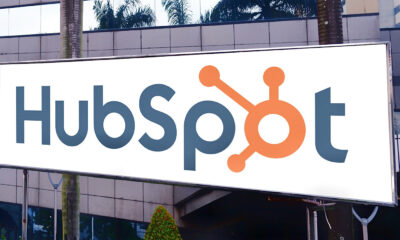PPC
Partner Marketing and Data-Driven Hyper-Personalization

When it comes to the modern e-commerce landscape, customer experience is everything. Your customers now expect seamless service across all platforms as more businesses move to integrated data. On top of that, customers want to feel valued as individuals.
Until recently, this personalized experience was only viable with audience segmentation. Breaking down customers into groups like age, likes & dislikes, or income bracket.
Now, with advancements in AI, data processing, and storage, we can get insights into each individual customer. We call this hyper-personalization, enabling your contact center to experience customer interactions on a deeper level.
As e-commerce trends go, hyper-personalization seems like it’s here to stay. This article will cover everything you need to know about hyper-personalization. We’ll focus on how to use it to boost your partner marketing strategy. These tips will help you whether you are an established business or a new company just dipping your toe into the water.
What is Partner Marketing?
You’re probably familiar with partner marketing, at least in some way. This is any marketing you do through third parties. Whether that’s your affiliate network, partner businesses, influencers, or even customer referrals. These are a few types, but partner marketing could include:
- Loyalty/reward programs
- Influencer marketing
- Content-based marketing
- Distribution partners
- Authorized resellers
- Sponsorships
- Product/brand licensing
- Development partners
- Referral Marketing
- Product placement
It’s an exhaustive list, but most online marketers will focus on the following four key areas for partner marketing.
Affiliate Marketing
Affiliates can be other businesses or individuals with a solid online presence. You give them personalized links, which they repost via their social media channels or blog. Then, you pay the affiliate a commission every time someone uses those links to buy from you.
This works best for brands that strongly associate with the influencer or blog owner’s audience segment. For example, a business software blog would be a good affiliate option if you sell contract management solutions to B2B clients.
Referral Marketing
Referral partners are a bit like affiliates. The difference is that these partners have personal experience with your brand, and recommend it only to close contacts. Referral marketing can happen on social channels but involves personal, not brand, accounts.
The advantage of this type of referral is pre-engaged traffic. The referral partner only recommends your business to personal contacts with an existing need. This means they trust the partner’s opinion and are highly likely to convert. It’s a low-volume, high-quality, approach.
Channel Partners
This is a wide bracket of third-party businesses that help market your product. Specifically, channel partners help you reach new markets, either geographically or demographically. It could be suppliers, distributors, resellers, brokers, or any business you work with.
This kind of partnership requires a pre-existing relationship with a third party. It also needs an established marketing strategy that your partners can follow.
Strategic Marketing Partnerships
These partnerships involve working with a separate business towards a single goal. Often, your business values or objectives will align in a non-competitive way. This gives you opportunities to cross-promote to each other’s audience. You can look at startup trends to further your research.
For example, consider EE offering Apple TV and music as part of their phone plans. It’s a selling point for their network, bringing in more subscribers to Apple’s ecosystem. Both businesses benefit.
There are many ways that strategic partners can work together. Joint sponsorships of events, partnering on community initiatives, or shared subscriber benefits. These are a few ideas you could pursue.
Casting A Wide Net
The issue with a lot of partner marketing is that your business has little idea who the audience is. Sure, you can target businesses and influencers in specific demographics. Yet, as individuals, you have little to no idea about their habits, and preferences.
Using data-driven hyper-personalization can overcome this barrier. This will allow your business and your partners to reach your audience on a more personal level.
What is Hyper-Personalization?
We’re talking about tailoring content, marketing, or even pricing, to each individual. It sounds like a monumental task for any large business, but using AI-assisted data analysis makes it achievable no matter your scale.
Regarding partner marketing, you’ll need a robust data collection, storage, and analysis process. You need to accommodate your partners’ data, too. This will require automated data collection and AI-driven processing.
Deloitte’s recent whitepaper study shows how you can use personalization at every stage of your buyer’s journey.
The Data-Driven Approach to Personalization
These advanced AI computing networks use neural network processing to sort vast amounts of customer data. They analyze it and provide usable output in the form of reports. You can feedback the resulting data into your system to optimize content.
The AI can identify trends in customer habits, and preferences right down to the individual level. That’s what makes this strategy work.
Cloud storage technology also helps enable these collaborative efforts. Your business and partners can remotely collect data in the same non-physical location. This just wouldn’t have been practical with traditional separate systems.
The Benefits of Using Personalization & Partner Marketing Together
You might be wondering how all this data helps you connect with customers. Now you have individual data like channel preferences, engagement, and activity habits. This means you can dynamically tailor your messaging, offers, etc., to that customer’s tastes.
Using AI-driven automated systems means you can deliver individualized content seamlessly. Marketing techniques like dynamic ads, and push notifications only make this easier. Even when customers know their ads are being personalized, 90% prefer it.
Thanks to recent technological advances, many cloud technology Instance Types are affordable even for smaller businesses. It means there’s little to no extra cost to incorporating your partners’ data into the network.
Final Thoughts: Personalize to Optimize Your Customer Experience
In the end, it all comes back to enhancing your customer experience. The whole point of personalizing a user’s content is to deliver them the best experience possible. Customers want to feel valued, listened to and engaged.
You can achieve these three critical customer satisfaction points no matter what your product or service is. Data-driven insights will let you get to the core of your customer’s needs, and behaviors.
It doesn’t matter if you’re signing customers up for a Netflix subscription or giving B2B clients an exploratory testing example. You can still design your content around their needs, pain points, and interests. Using the right data insights will equip your business with the knowledge needed.









![Holistic Marketing Strategies That Drive Revenue [SaaS Case Study] Holistic Marketing Strategies That Drive Revenue [SaaS Case Study]](https://articles.entireweb.com/wp-content/uploads/2024/09/Holistic-Marketing-Strategies-That-Drive-Revenue-SaaS-Case-Study-400x240.png)
![Holistic Marketing Strategies That Drive Revenue [SaaS Case Study] Holistic Marketing Strategies That Drive Revenue [SaaS Case Study]](https://articles.entireweb.com/wp-content/uploads/2024/09/Holistic-Marketing-Strategies-That-Drive-Revenue-SaaS-Case-Study-80x80.png)


You must be logged in to post a comment Login